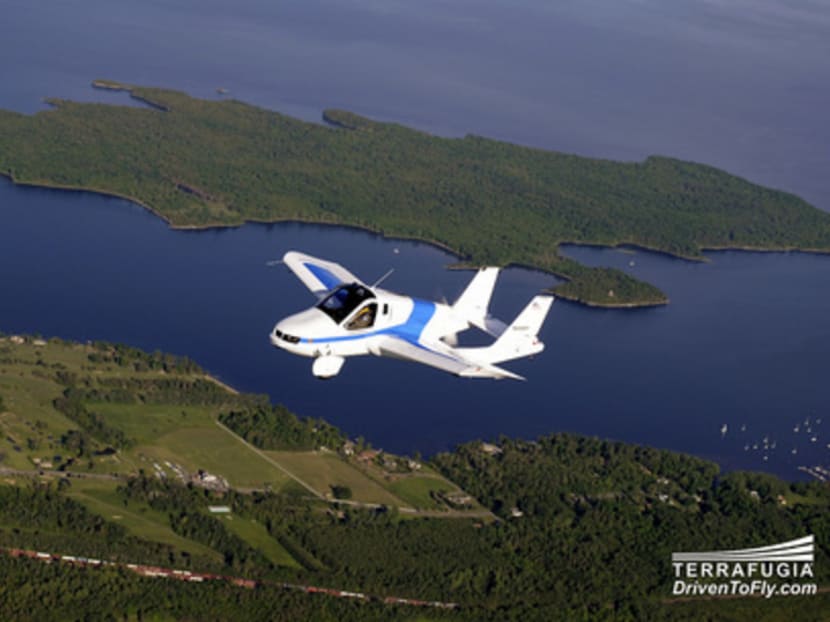Flying-car dream a reality as S$363,000 vehicle takes off
WOBURN (Massachusetts) — The first time Mr Carl Dietrich took his flying-car concept to the Experimental Aircraft Association’s annual AirVenture gathering in Oshkosh, Wisconsin, he had only a video to show aviation geeks who wandered by his stall.

More than a hundred people have paid deposits of S$13,000 each for the Transition. Photo: Terrafugia
WOBURN (Massachusetts) — The first time Mr Carl Dietrich took his flying-car concept to the Experimental Aircraft Association’s annual AirVenture gathering in Oshkosh, Wisconsin, he had only a video to show aviation geeks who wandered by his stall.
The following year, he brought the mock-up of a wing. Six years later, in July 2013, he was finally ready to fly the prototype.
As the announcer who introduced the Terrafugia Transition put it: “This is one of the most incredible things we’ve ever seen in Oshkosh. Twenty-five minutes ago, this was a street-legal automobile. Now, it’s in the air.”
Pilot Phil Mateer buzzed the crowd while the announcer asked him how it felt up there. “I’m in a car looking down on traffic,” Mr Mateer replied. “And it flies real nice.”
The promise of a mass-produced flying car has taunted aviation enthusiasts for generations. However, Mr Dietrich is today closer than anyone since pilot Moulton Taylor’s ill-fated attempt to make the US Federal Aviation Administration (FAA)–approved Aerocar in the 1950s.
“What Carl and his team are doing is a recreation of that same dream, with another lifetime’s worth of technology ... and aerodynamic modelling,” said Mr Jake Schultz, a technical analyst at Boeing and author of A Drive in the Clouds: The Story of the Aerocar.
More than a hundred people have paid deposits of US$10,000 (S$13,000)each for the Transition, which will be capable of 110kph on the road and about 150kph in the sky when it finally goes to the market sometime in the next three years.
Mr Dietrich is refining details on the third-generation prototype of his US$279,000 vehicle before attempting certification by the FAA, which regulates planes, and the National Highway Traffic Safety Administration, which oversees cars.
Mr Dietrich, 37, said he had first proposed a flying car as a doctoral candidate in aeronautical engineering at the Massachusetts Institute of Technology, where he and his team won second prize in the 2006 MIT $100K Entrepreneurship Competition. That same year, he also won a US$30,000 Lemelson-MIT National Collegiate Student Prize, part of which he put towards the initial trip to Oshkosh, where he met his first angel investors and signed up prospective buyers.
A reason the Transition is further along than any previous flying-car concept is that, in 2004, the FAA created the light sport aircraft designation for planes that weigh less than 600kg and seat no more than two people. LSA makers are given an easier path to market to encourage entrepreneurship and innovation in a niche of the industry.
Critics have said flying cars are unlikely to be both great aeroplanes and great automobiles, but that misses the point, said Mr Dietrich. The way he sees it, flying cars are inevitable and, once the first one proves its way in the world, others will follow. “I wouldn’t waste my time if I didn’t think we could change the world.” BLOOMBERG






